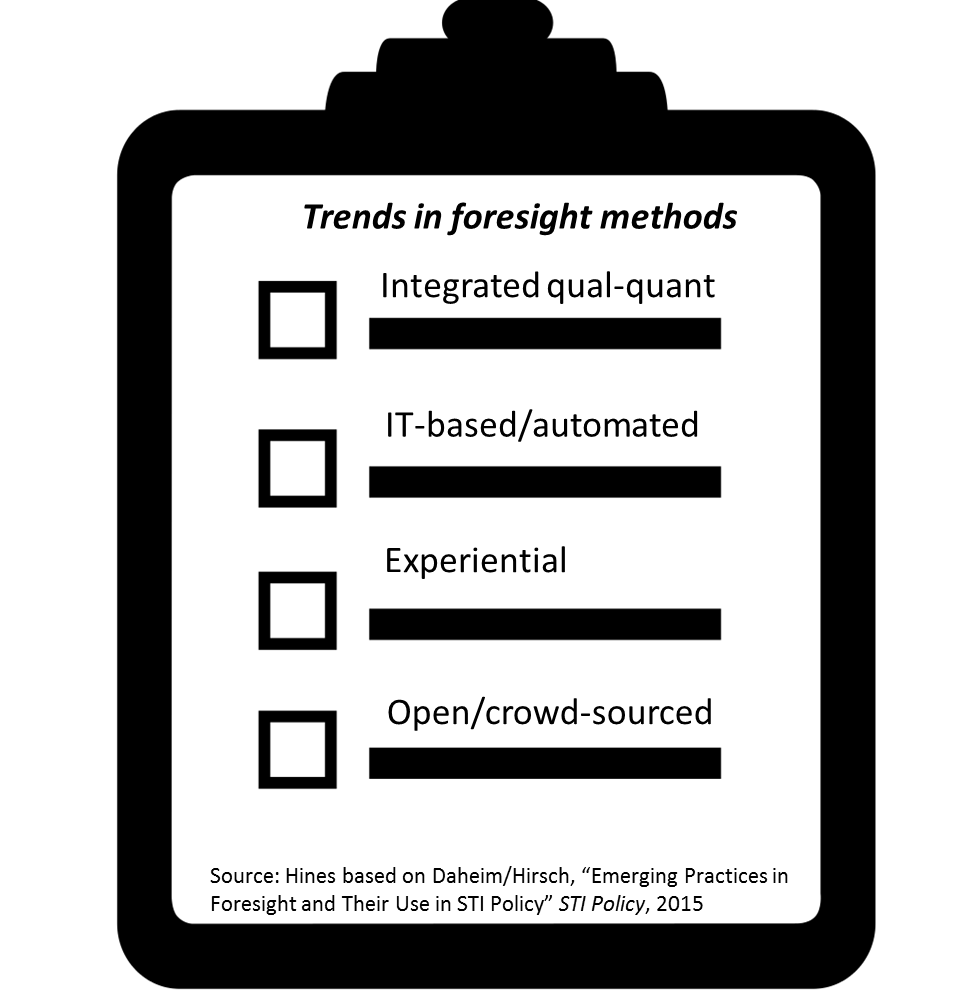I came across a very nice paper posted to the APF list: Emerging Practices in Foresight and Their Use in STI Policy, by Cornelia Daheim & Sven Hirsch. Cornelia is now with Future Impacts after many years with ZPunkt in Germany and is a top-shelf practitioner. I don’t know Sven, but he’s in good company!) They used an extensive survey to get at trends in the use of foresight methods. As is often the case with surveys – in my view at least – they confirm what we are already seeing. The survey was supplemented by a lit review and expert consultation.
Now that I’m primarily on the academic side with Houston Foresight, it’s more important than ever to be up-to-date in the evolution of methods – lest we provide an outdated experience for our students. I’m prepping to teach our Futures Research class in the fall and was literally musing  over this question of how methods are evolving when this piece came across the wire (so-to-speak). The four clusters identified were:
over this question of how methods are evolving when this piece came across the wire (so-to-speak). The four clusters identified were:
- Integrated qualitative-quantitative approaches
- IT-based/“automated” foresight
- Experiential, i.e., new forms of communication and interaction (visualization, gaming, design fiction)
- Open and crowd-sourced foresight
I think these four areas are spot-on! And I have been wrestling with how to incorporate more of them in the curriculum. On qual/quant approaches, I would like to strengthen our capabilities in predictive analytics. In terms of automated foresight, I’m discussing how to expand our FF process and tools to completely online. We are doing some scanning work that should enable us to explore aspects of automation. We’ve probably done most work on communication/interaction/experiential. As an example, one of our students design a “communicating foresight” class and module for us to incorporate into the curriculum. We’re probably weakest on the crowd-sourcing approaches. We’ve made inquiries to those who have this kind of software, but haven’t gotten far, and I suppose there is no need to rely on other’s software.
I find this list of four both comforting and challenging. We’re aware of these movements, but at the same time it is always challenging to add more to an already bursting-at-the-seam curriculum. At some point, one simply cannot shoehorn in any more material, suggesting it’s time to “step-back” and review the whole enchilada. In the meantime, Cornelia and Sven have provided use with an excellent set of clues on where our future priorities out to lie. – Andy Hines

Interesting stuff, Andy. I’d be curious to delve into which of these might be useful in the market insight/competitive intelligence firm I am working with. Any of this in the Futures Research course this fall?
yes, indeed. Just wish we had more time to cover!
Oh, and check out UNU (http://go.unu.ai/lobby) for crowd sourcing.